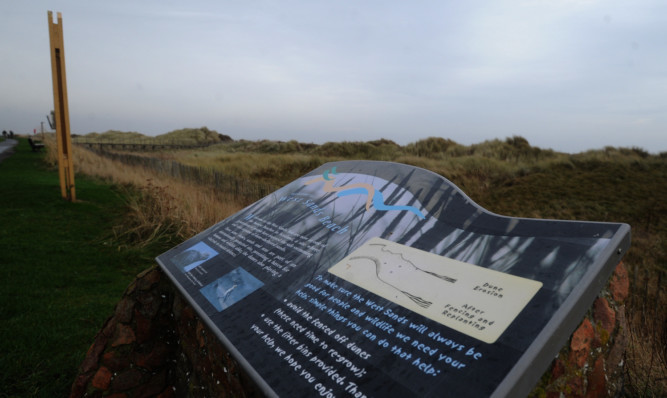Vulnerable sand dunes which protect St Andrews’ links golf courses are said to be recovering well from severe storm damage caused almost six years ago.
The West Sands dunes were hit by a storm surge in March 2010 which coincided with a particularly high tide, destroying part of the sea wall and flooding the Eden course.
A recent survey by Scottish Natural Heritage found that work by conservation bodies and St Andrews University to reverse coastal erosion had paid off.
New plant life is present for the first time in several years and birds such as ringed plover have bred successfully for the first time in decades.
The dunes form part of the internationally-protected Eden Estuary Site of Special Scientific Interest and the Firth of Tay and Eden Estuary Special Area of Conservation.
Access to the dunes is now managed, with sensitive paths closed off and boardwalks and signed paths providing access to the beach from the car park.
SNH operations officer Gavin Johnson said: “We were delighted to discover the dunes are recovering so well.
“This is thanks to the hard work of a partnership made up of local councillors, conservation bodies including SNH and the University of St Andrews.
“We’d like to thank all our partners for working hard with us over the last five years to restore and protect the West Sands dunes.”
Mechanical cleaning of the beach was stopped and replaced by manual litter picking and the seaweed left behind allows sand to build up and dune plants to colonise and expand seawards, helping to prevent erosion.
Most of the Out Head area is closed to vehicles and managed more sensitively, with a conservation grazing herd provided by farmer Robert Dewey.
A large-scale dune restoration project was completed at the Swilcan section in 2010, when tens of thousands of tonnes of sand was used to reprofile the dunes.
Volunteers helped replant the section under the supervision of Fife Coast and Countryside Trust ranger Ranald Strachan, in work that was documented by BBC TV programme Countryfile.
Mr Strachan said: “The entire length of the dunes, almost two kilometres to Out Head, has been fenced off and dune grasses planted in some of the more exposed areas.”
He said recovery had been aided by the efforts of St Andrews Links Trust, Fife Coast and Countryside Trust, Fife Council, the West Sands Partnership, which was formed in 2010, and members of the public.
He added: “Without the understanding and efforts of beach users and volunteers during the planting phases, the improvements would not have been possible.”
